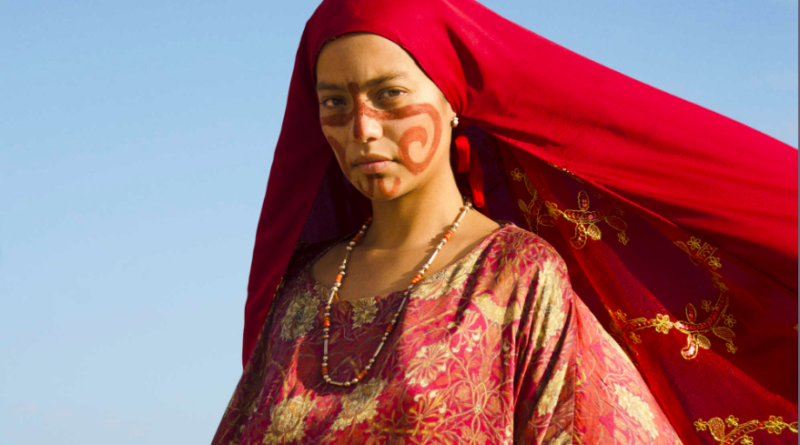#Review Birds of Passage
Birds of Passage (2018), co-directed by Cristina Gallego and Ciro Guerra, is a dramatic film about Colombia’s drug trade, spanning a period of two decades from the 1960s to the 1980s, as seen through the eyes of a multi-generational indigenous family who become involved in the business of drug dealing. The film is based on a story by Jacques Toulemande with a screenplay by Maria Camila Arias. The film is beautifully shot by cinematographer David Gallego.
Gallego and Guerra weave together many visual elements to create a compelling dramatic film where marginalization, lawlessness, and poverty meet business opportunities. The film is set against a wider context of Colombia’s decades long conflict beginning in the 1960s between the Colombian government and several militant groups including the Revolutionary Armed Forces of Colombia (FARC), the National Liberation Army (ELN), and the drug cartels.
Birds of Passage takes place in Wayuunaki, an indigenous language spoken by the indigenous group the Wayuu, Spanish, and with a little English dialogue. The film is sub-titled.
A recurring motif running through the film is the avian birds-of-paradise, a sacred bird for the Wayuu people. The bird species are endangered due to the deforestation of their habitat like the Wayuu themselves who have been under threat and have seen a loss of territory and a traditional way of life. These avian birds-of-paradise lend their name to the beautiful, colourful flowers which resemble the avian birds-of-paradise in flight. The avian birds-of-paradise hold great spiritual significance for the Wayuu people as seen in their courtship dance called the YONNA when the female protagonist’s daughter wraps herself from head to toe in a red blanket and chases a male suitor while mimicking exaggerated bird-like movements. The birds-of-paradise appear throughout the film which serves as a metaphor to endangered people victimized by centuries of colonization and exploitation since the time of Columbus to a dangerous way of life that puts them further at risk and in harm’s way. Another recurring motif is the culture of the Wayuu people. Wayuu culture, beliefs, and traditions are contextualized in the narrative of the film giving it richness and complexity and a documentary-like quality.
Birds of Passage is well-crafted making use of diverse angle shots, editing techniques incorporating long and short takes, night and day, scenic and diverse locations, and dream sequences. The directors use interstitial titles to structure the film over a time span. Close-ups and medium angle shots are interspersed with wide-angle shots. The directors juxtapose the narrative of the family drug business against the simmering tensions amongst the characters and the community to create dramatic tension that moves the film. It’s a compelling and powerful film that shines a light on the drug trade in Colombia as seen through the point of view of an indigenous family trying to survive not only a failed state but overcome poverty and marginalization. It is a well-crafted film deserving of your attention. Do see it for you won’t be disappointed!
[Review by Stefan Chiarantano ]
Birds of Passage opens at the TIFF Bell Lightbox on March 1, 2019

